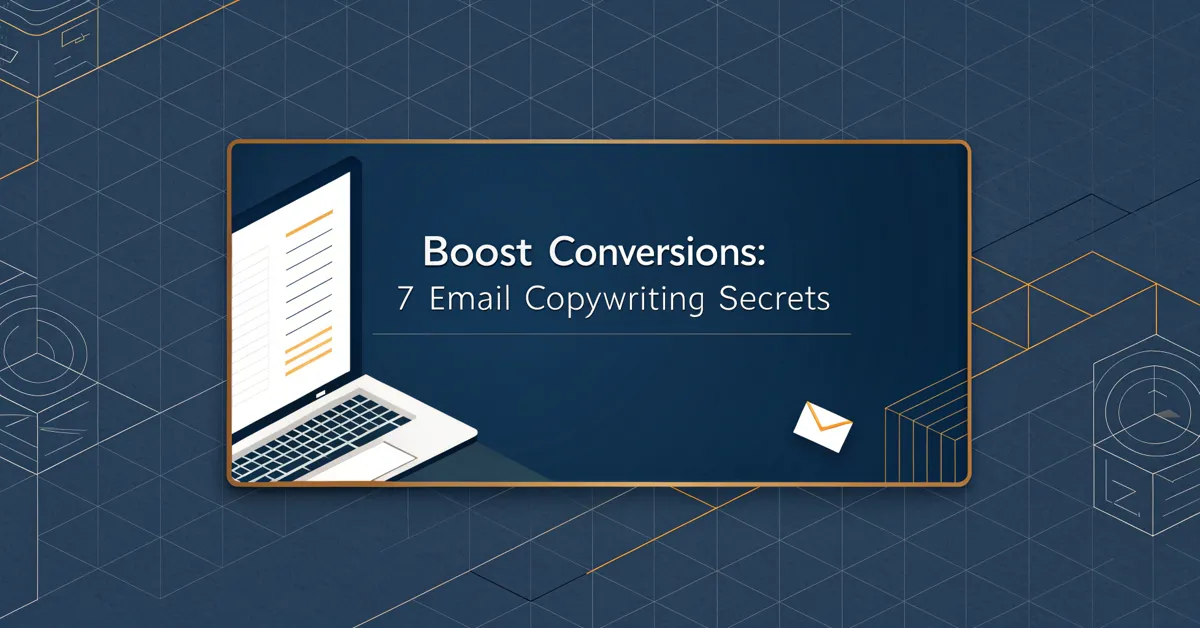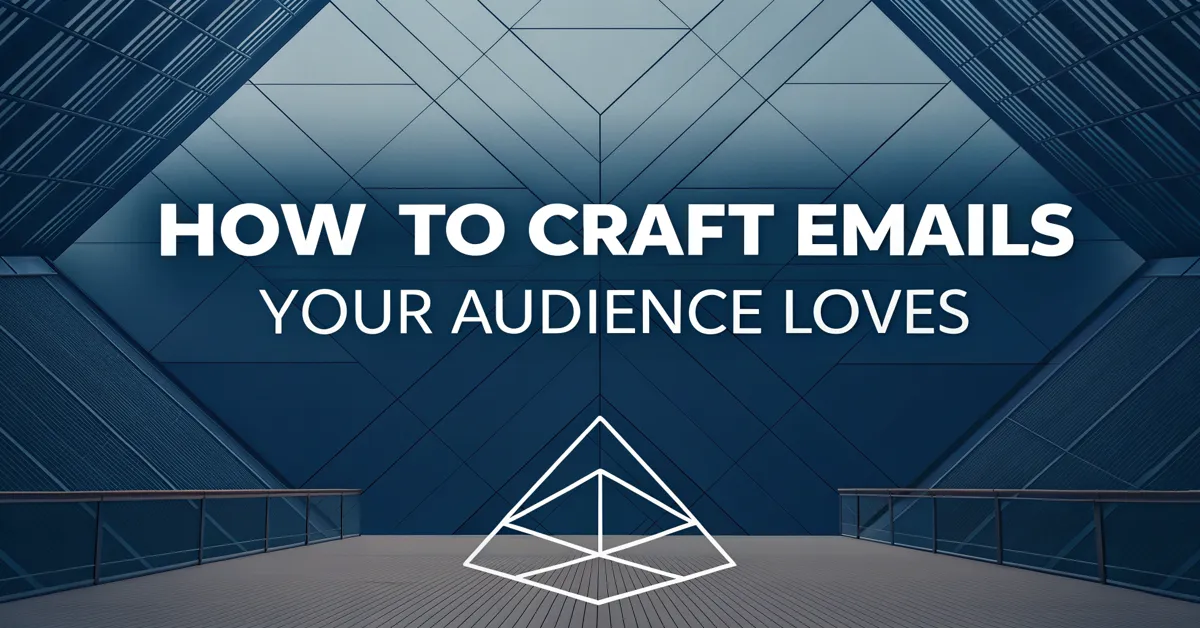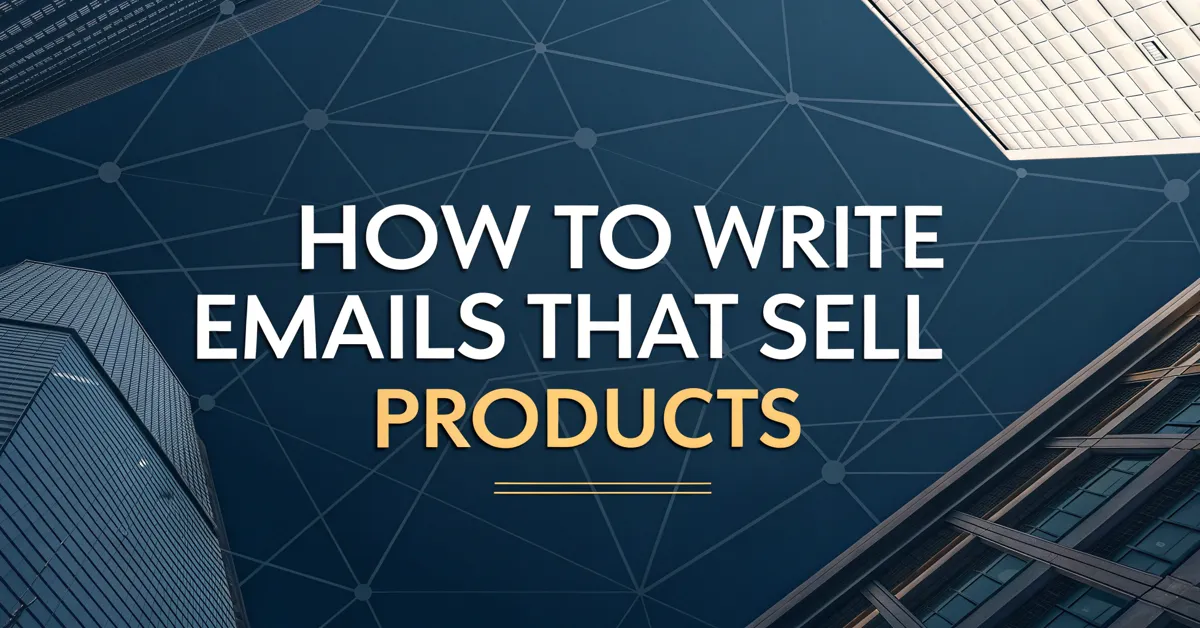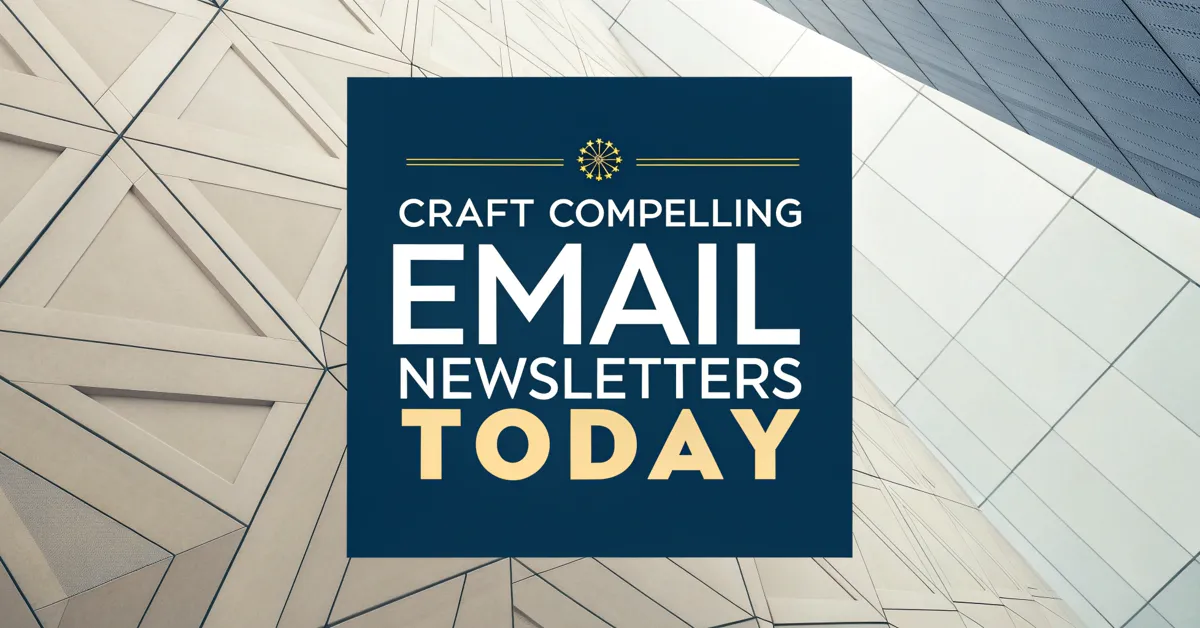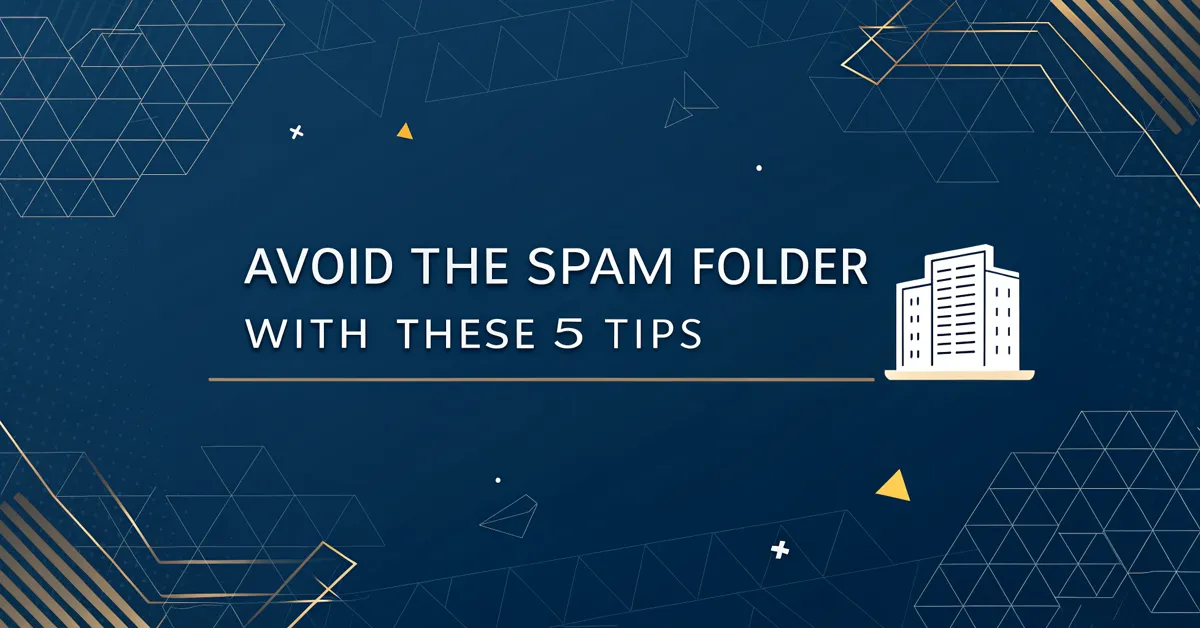Are you tired of emails that get ignored, banished to the spam folder, or worse, marked as unread? You pour your heart into crafting the perfect message, only to see it fall flat. It’s a common struggle for copywriters, but it doesn’t have to be your reality. The good news is, there are tried and tested methods to boost your email open and click-through rates. And those improved metrics will translate into more sales and conversions. The problem isn’t your audience; it’s your approach. What you need are some email copywriting secrets that will help your words make an impact.
The Power of Words: Why Email Copywriting Matters
Email might seem like an old-fashioned channel in the age of social media and AI. Still, it remains one of the most powerful marketing tools to date. The numbers prove this. For every dollar you spend on email, you get around $36 back. That’s a return on investment that few other methods can match. But to get that type of return, your emails need to be effective. And effective emails start with solid copywriting. Good email copy does the following:
- Grabs attention: Inboxes are crowded. Your email needs to stand out from the dozens of others vying for the reader’s time.
- Connects with the reader: Your email should speak directly to their needs, wants, and pain points.
- Drives action: The goal isn’t just to be read; it’s to get the reader to do something, whether it’s clicking a link, making a purchase, or signing up for a webinar.
- Builds relationships: Consistent, well-crafted emails build trust and keep your brand top-of-mind.
7 Email Copywriting Secrets to Maximize Conversions
Now that we understand the importance of good email copy, let’s dive into the actual techniques you can start using now. These secrets aren’t about tricking your readers. They’re about using language in a way that informs, resonates, and motivates.
1. Subject Lines That Sizzle
The subject line is the gatekeeper to your entire email. It’s the first thing, and sometimes the only thing, people will see. So it has to work hard. A boring or misleading subject line will get your email trashed no matter how great the body is. The key is to make it impossible to ignore. There are a few ways to do that:
- Create a sense of urgency: Words such as “last chance,” “limited time,” or “ends tonight” can spur people to open your email right away. However, make sure to use this tactic sparingly. Overuse and your audience will lose the sense of real urgency you wish to create.
- Spark curiosity: Instead of stating the obvious, try hinting at what’s inside. A question can also do the trick. For example, instead of “New Product Announcement,” try “Wondering how to improve X? Look no further…”
- Personalize the subject line: Using the reader’s name, or mentioning something relevant to their past purchase or interests, can make the email feel more targeted and less generic.
- Use numbers: Lists and specific numbers work wonders. For example, “5 Ways to Boost Your Email Conversions” can be very appealing. Data and figures can also increase credibility and spark more attention.
- Keep it short: Subject lines that get cut off are not great. Aim for less than 50 characters, or it will get truncated on some mobile devices.
Example:
Instead of: “Our New Fall Collection Is Here”
Try: “🍂 Last Chance for Fall Savings”
2. The Power of a Strong Opening
The first line of your email is just as crucial as the subject line. It’s your chance to connect with your reader and let them know why they should keep going. The first line does the following:
- Address the reader directly: Start by talking to your reader. You can do this with “you” or “I.”
- Acknowledge their needs: Refer to a pain point or goal that’s relevant to your audience.
- State a benefit: Tell them quickly what your email offers.
Example:
Instead of: “We’re excited to announce…”
Try: “Are you struggling to get more email opens? I understand, it’s a common issue…”
3. Focus on Benefits, Not Features
Most people make a common error with their email copy. They focus on the features of their product, service, or content. Instead, shift your focus to the benefits. Your readers care more about what your offer can do for them, not what it is.
- Features tell, benefits sell: A feature is a characteristic of your product. For example, a phone might have a 12-megapixel camera (feature). The benefit is the ability to take amazing photos.
- Address the pain: Highlight how your offer will solve a problem. For example, instead of saying, “Our software has advanced analytics,” say, “Get clear insights to make better business decisions.”
- Focus on results: What will the reader achieve after using your product or service? Paint a clear picture of what the results will be. For example, instead of “Our course includes 10 modules,” say, “Learn to master copywriting and write words that sell.”
Example:
Instead of: “Our new software offers AI-driven reporting”
Try: “Get more actionable data. Make better decisions, faster.”
4. The Art of Storytelling
Humans are wired for stories. They captivate our attention, evoke emotion, and make a message more memorable. And storytelling can make your emails more effective. Here’s how to apply it:
- Use real examples: Share stories of how your product or service helped others succeed.
- Share your own experience: Be honest about your struggles. It makes your brand more human.
- Create an emotional connection: Use language that taps into feelings such as joy, hope, or even frustration to create an emotional bond.
- Make it relevant: Every story you tell should connect back to what you’re offering and why the reader should care.
Example:
Instead of: “Our online course will teach you X”
Try: “I remember when I first started… Now, after the course, here’s how I got my sales doubled”
5. Clear and Direct Calls to Action
A call to action (CTA) is a must in any email. This part of the email tells your readers exactly what you want them to do. Be clear, be concise, and be compelling. Avoid vague or confusing instructions. Here are some points to take into consideration:
- Use action words: Start your CTA with an action verb such as “Buy,” “Learn,” “Sign up,” “Download,” or “Start.”
- Make it stand out: Use a button or a different color. It can help your CTA get noticed more.
- Keep it simple: Stick to one or two actions per email, or it might get too overwhelming.
- Create a sense of value: Show why they should act right away.
Example:
Instead of: “Click here”
Try: “Start your free trial today!”
6. A Touch of Scarcity
People often put off things they want. That’s why creating a sense of scarcity can encourage them to take action right away. The key is to use scarcity tactics in a way that is honest and ethical. Some common tactics include:
- Limited supply: “Only 10 spots left” or “Limited quantity available.”
- Time-sensitive offers: “This offer ends in 24 hours” or “Don’t miss out on this special price.”
- Exclusive access: “Early access for our subscribers” or “Join our VIP list for exclusive deals.”
- Avoid overuse: If every email you send is marked as “urgent” or “limited,” your readers will stop taking them seriously. Make sure to use scarcity tactics sparingly.
Example:
Instead of: “Sign up for our course”
Try: “Enroll now, spots are limited and this offer ends tonight!”
7. Test and Analyze, Then Repeat
The secrets we’ve covered are a good starting point. However, the best approach is to see what works with your audience. You’re not your audience. The process of improving email copy is ongoing. Every time you send an email, you get the chance to learn more. Pay attention to how your audience is reacting. You can do this by testing different versions of your emails and checking the results. There are several ways to do that:
- A/B testing: Send out two different versions of your email with small changes (for example, two subject lines) to see which one performs better.
- Analyze open rates: What subject lines are getting the most opens? This is a great indication of what your audience responds to.
- Track click-through rates: Which links are getting clicked most often? This shows what parts of your emails are most compelling.
- Look at conversion rates: How many people are taking the desired action? This will show you how effective your emails are overall.
- Use data to inform your next steps: Once you’ve analyzed the data, make changes in your next email. Never stop improving.
The Essential Email Copywriting Checklist
Let’s recap what we’ve covered. Keep this email copywriting checklist close at hand:
- Subject line:
- Is it interesting?
- Does it create a sense of urgency?
- Is it personalized to the reader?
- Is it short enough to avoid being truncated?
- Opening:
- Does it speak directly to the reader?
- Does it acknowledge a pain point or desire?
- Does it promise a benefit?
- Body:
- Does it focus on benefits over features?
- Does it tell a story?
- Does it create an emotional connection?
- Is it easy to read and skim?
- Call to Action:
- Is it clear and specific?
- Does it stand out visually?
- Does it create a sense of value?
- Scarcity:
- Have you used scarcity tactics appropriately?
- Are they truthful and ethical?
- Testing:
- Are you A/B testing subject lines and other elements?
- Are you tracking your open, click-through, and conversion rates?
- Are you using the data to improve your next email?
Tools of the Trade: What Email Copywriters Use
While email copywriting is about words, there are tools that can help you with the process. These can range from email platforms to testing software and even content checkers. Here are a few options:
- Email marketing platforms: Use email marketing platforms like Mailchimp, ConvertKit, or ActiveCampaign to segment your audience, automate your emails, and track your metrics.
- A/B testing tools: These can be included in your email platform or a separate app. They help you test different subject lines, CTAs, and other email elements.
- Grammar checkers: Tools such as Grammarly, Hemingway or the built in check on your writing platform can help make sure your emails are free of grammar and spelling errors.
- Readability tools: These tools can check how easy it is to read your emails.
- AI writing tools: Use AI copywriting tools (such as Semrush’s) to get ideas for subject lines, email copy, and calls to action.
- Analytics: Use your email platform’s analytics to get a clear picture of how well your emails are performing.
Common Email Copywriting Mistakes (And How to Avoid Them)
Even the most skilled copywriters make mistakes. The goal is to learn from them. Here are some common errors you might be making and how to avoid them:
- Generic language: Vague, uninspired language will not cut it. Instead, use specific language. Refer to specific problems and solutions.
- Too much focus on “we”: Your reader wants to know what you can do for them. Not how amazing you are. Shift your focus away from yourself.
- Ignoring mobile optimization: Most people read emails on their phones. So, your email needs to be mobile-friendly. Avoid small fonts or large images that make your email hard to read.
- Not personalizing: Personalization is not only about using the reader’s name. It is about addressing specific wants and needs.
- Being too promotional: If your emails are too sales-heavy, your audience will unsubscribe. Instead of being overly promotional, focus on providing value. Then, they’ll be more likely to buy from you.
- Forgetting the basics: Even the best techniques can fall flat if you ignore the fundamentals. It’s wise to double-check for grammar and spelling errors, and ensure a clean and easy to read email.
- No clear goal: All your emails should have a specific purpose. Not defining that goal can make your message confusing.
Going Beyond the Basics: Advanced Email Copywriting
So, you’ve mastered the basics. Now, let’s look at ways to take your email copywriting to the next level. These are more advanced techniques that require a deeper level of strategy:
- Segmentation: Don’t send the same emails to everyone. Instead, segment your audience based on their interests, past behavior, and other data to send more targeted messages.
- Personalized journeys: Create email sequences that guide your readers through the customer journey. That involves sending emails based on specific triggers and actions.
- Dynamic content: Include different copy or visuals based on who is reading the email.
- Story-driven sequences: Connect your emails to form a story that keeps readers engaged. It also builds brand loyalty.
- Behavior-based emails: Use data to trigger automated emails that are relevant to the reader’s behavior. For example, when someone abandons a cart or visits a product page.
- Using social proof: Show the people who already trust you, and how they’re seeing results. Add a customer review or mention a case study.
- Retargeting: People may not buy from you after the first email. Sending follow up emails or reminding them of a cart or product they viewed can increase sales.
- Making use of multimedia: Instead of just text, include images, gifs, videos, and even interactive components like polls or quizzes.
- Ethical persuasion: Always use persuasion tactics that are transparent. You should avoid being manipulative. Your goal is to show how you can help. Not to trick or deceive.
The Final Word: Is Email Still Relevant?
In a time of social media, instant messages, and AI, many wonder if email is still relevant. And the answer is a definite yes. Email is still one of the most direct, effective ways to connect with your audience. It can be used to build relationships, provide value, and drive sales. The secret is using the email copywriting secrets you have discovered today. You can also combine them with an intentional, data driven approach to maximize results. Remember, email is only dead if you fail to use it properly. It’s time to give your emails a new look. Use the tips you learned today. Stop sending emails that get ignored, and start sending emails that produce real results.
